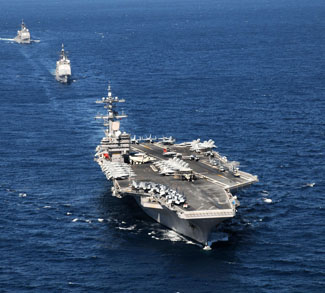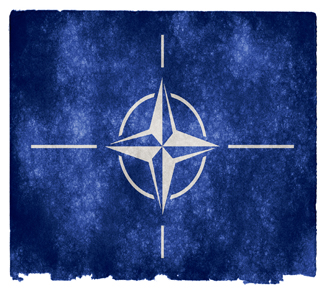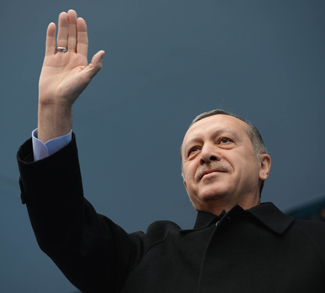Discussions of conflict and threats to states have been dominated by the word “asymmetry,” and by the idea of the “asymmetric expectations” of states today. Ever since 9/11, the general hybridity of asymmetry and symmetric war has been conspicuously overlooked. The former is a nascent form of the other. Yet, 9/11 instantly unleashed many unscrupulous views, attitudes, and interpretations of the world (with the attacks of 9/11 themselves being a vivid example of asymmetric warfare). The elevation of warfare to an entirely different level brought with it a disconnection from the previous and intimate knowledge of this political-military or military-political coherence.
States, especially rising powers in today’s world, struggle to match their expectations of state interests and assessments of the tactical, operational, and strategic means used in achieving their aims, asymmetry is both politically and militarily prevalent just as it always has been. One can perceive this as a natural evolution of a state. Interestingly, states have extensively employed the concept of asymmetry even as symmetric force actors. The Cold War provides rich examples of states that rely heavily – even though somewhat defiantly in terms of whom we perceive to be primary within the conceptual framework of asymmetry – on asymmetrical warfare. This is despite the understanding of the internecine nature of conflict between two superpowers.
Even states that possessed the most advanced weaponry, supported by struggling economies, didn’t possess a perfect stats card, nor is this achievable. Great powers that have consciously pursued grandiose weapons agendas and force procurement programs have never been able to completely escape from inconsistencies, weaknesses, or natural vulnerabilities. The North Atlantic Treaty Organization’s (NATO) technological position placed its members above the Soviet Union but Soviet forces station in East Germany and elsewhere throughout the Warsaw Pact countries, were produced and amassed in such massive quantities that numerical superiority, in some cases up to five-to-one, catapulted Moscow ahead of its adversaries. NATO and the Warsaw Pact were both ahead of and behind one another. Both were actors of symmetrical and asymmetrical warfare. As such, one could interpret their conflict both as symmetric and asymmetric.
How do we speak of the return of a concept like symmetric warfare when it’s nearly impossible not to take notice of the evidence of its presence?
America’s War of Independence, the Philippine-American War, the Second Boar War, Germany’s submarine warfare against the Western Allies, and the Soviet invasion Finland were wars that prominently featured asymmetry of strategy between opponents of symmetric status. The list of examples of strategic asymmetry that’s existed within symmetrical warfare is endless. Indeed, asymmetry has been a prevailing concept throughout history especially in the field of warfare. This dynamic within a multipolar world of powers, rising powers, and great powers, has changed little. B. H. Liddell Hart, from The Revolution in Warfare, spoke of “decisive results” seen to “come from sudden shocks than from long-drawn pressure.” “Shocks,” he reminds us, “throw the opponent off his balance. Pressure allows him time to adjust himself to it. That military lesson is closely linked with the general experience of history that human beings have an almost infinite power of accommodation, to degradation of living conditions, so long as the process is gradual.”
What can be attained from symmetric force actors occasionally operating alongside both intentional and unintentional asymmetric conditions offers up something less predictable, less controllable, and less tractable based on various levels of assessment.
How should we look to the return of symmetrical warfare? If we can somehow conceptually wrap our heads around the concept of symmetrical warfare as something that can possibly be detached from asymmetry, and see it as a state of powers or major power using conventional forces against one another on the battlefield, then there is certainly reason to believe that security is much more manageable, although possibly deadlier, and conflict on the battlefield might be easier to avoid when it involves two or more powerful states. If we’re unable to come to a position of conceptual objectivity, we should then consider asymmetry in its most extreme forms.
Al-Qaeda and similar extremist groups and organizations engaged in violent activities that were truly asymmetrical – instances in which an overwhelmingly weaker actor waged war against an opponent incontrovertibly superior politically, economically and militarily. Even the disparity in their interests makes threat assessment difficult, war planning challenging, and war fighting with the view to “victory” nearly impossible. This prevented even a basic level of recognition of opponent’s legitimate status. It is likely that with the proliferation of technology, even if major powers stay ahead of asymmetrical outfits, will eventually somehow acquire a weapon or weapons of mass destruction like a nuclear device. In such an instance of asymmetry, the outcomes are sinister to imagine. Though, if asymmetry exists, as it always has and will, among states with powerful arsenals and interests, impediments to dealing with subsequent (military) challenges between them are likely to be fewer and further between.
When we speak of the future of warfare and the possibility of symmetry “returning,” we’re more accurately referring to redirecting our attention back to a concept that has been mainstay since the dawn of time. The best strategists and tacticians in political and military history have always looked for asymmetry and learned how to exploit it and put it into practice, but only through the understanding of symmetry. More than 1,500 years ago, Sun Tzu taught that, “[a]ll warfare is based on deception. When confronted with an enemy one should offer the enemy a bait to lure him; feign disorder and strike him. When he concentrates, prepare against him; where he is strong, avoid him.” Clausewitz imparted concepts and doctrine within the fields of conventional, traditional, regular, and symmetric warfare fields. They even crossed over and enabled us to use symmetry to better understand asymmetry and vice versa.
How do we speak of the return of a concept like symmetric warfare when it’s nearly impossible not to take notice of the evidence of its presence? Even one year after 9/11, when one would’ve expected to see a superfluity of asymmetrical lexicon, with so much hype centering on Jihadism as well as the US-led invasion of Afghanistan, and preparations for war against Iraq on the US government’s WMD-pretext, the nearly the opposite was the case. The US National Security Strategies, the National Defense Strategy, the National Strategy for Victory in Iraq (2005), and the National Military Strategy to Combat Weapons of Mass Destruction (2006) barely referred to the U.S. in an asymmetrical world or as a state ready for or engaged in asymmetrical warfare.
One must distinguish between the strategic asymmetry that is characteristic of the American approach when dealing with actors such as al-Qaeda, and the structural asymmetry arising from a strong imbalance in status between the actors. Our imagination of egregious violations of established rules of war indicates our common understanding that approach to warfare still entails symmetric expectations. On the other hand, such conflicts are a result of incongruous status existing between a great power, minor power or a non-state actor.
Perhaps the most distinguishable characteristic of asymmetry in warfare is the elevation the concept has experienced in the past several decades. Asymmetrical warfare simply made it to the global level. The 9/11 wars, the wars of today, and future wars will always have many different asymmetrical characteristics, just as the Cold War and its numerous hot wars did. Today, when we speak of asymmetry our attention is captured by images of extremism and violent radicalism with terrorist aspirations lending themselves to uses of low-technology weaponry used against states at their most vulnerable moments. But the wars of Afghanistan and Iraq, of Libya, and of Syria demonstrate that the symmetric war between comparable forces is alive and well. And, within those wars will always be asymmetric elements and practices, partly because of globalization, technological development (also advantages) that have contributed to technology gaps between states and NSAs, and partly because of economic disparities, which have played a major role in asymmetric warfare and warfighting.
The U.S. has built itself up as a country with a fighting force and a strong economy backing it to the point that currently it appears to be unbeatable when it comes to symmetrical warfare, and therefore would-de adversaries will always be looking for other (i.e., less convention or asymmetrical) uses of force against it in order to achieve their aims. But this should not overlook that even structurally and strategically asymmetric actors pride themselves in possession of weapons and equipment of great powers, essentially adopting a very symmetric attitude. As their power grows, such actors and outfits bring to the fore limitations of their previous asymmetric affirmations.
The opinions, beliefs, and viewpoints expressed by the authors are theirs alone and don’t reflect any official position of Geopoliticalmonitor.com.




